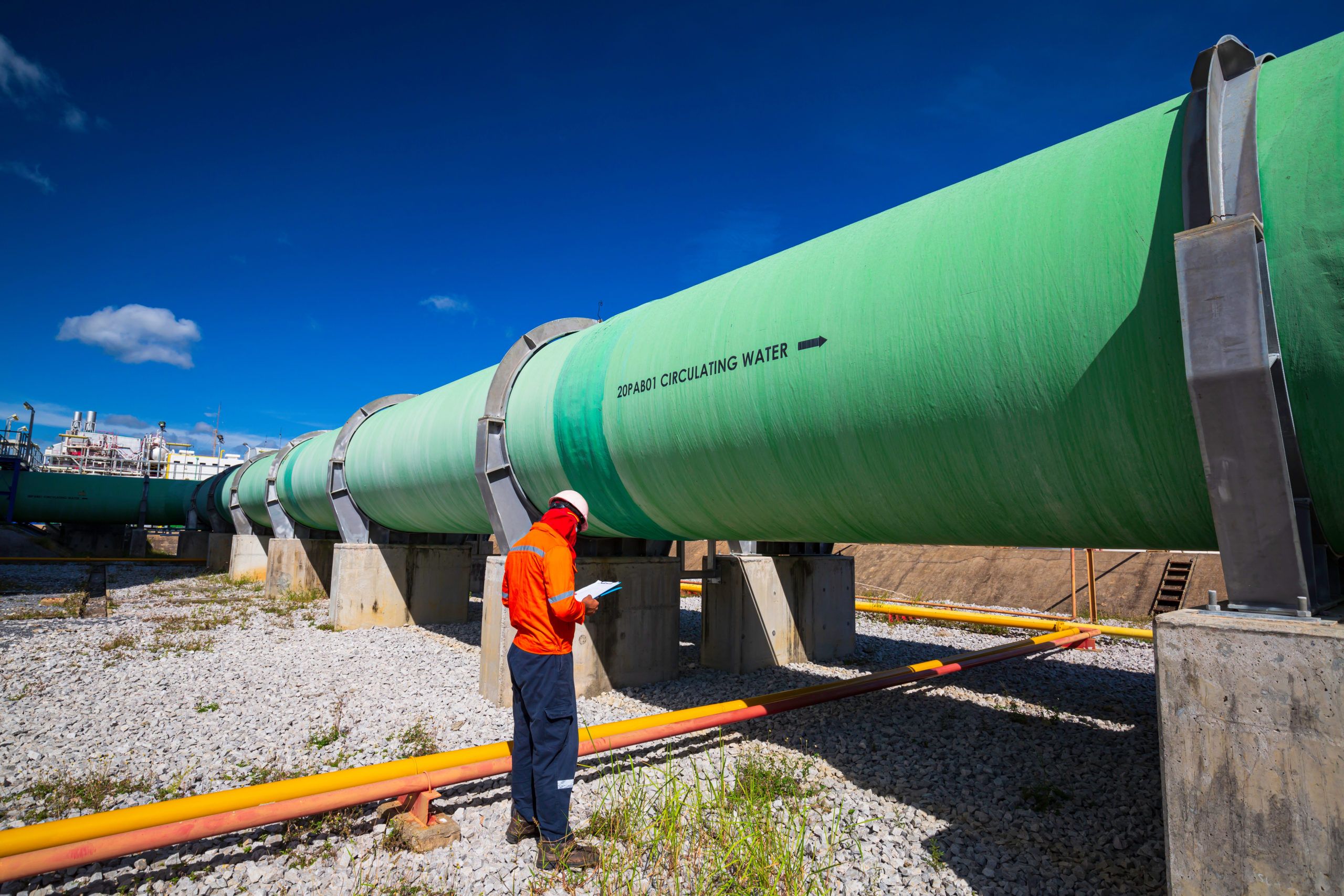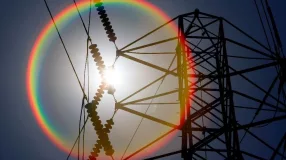By Braden Kelner / Pittsburgh Post-Gazette
Martin Edwards is no stranger to Capitol Hill.
Starting out as a staffer in Washington D.C. in 1987, Mr. Edwards worked for former U.S. Rep. Ralph Hall (R–Texas) and eventually became his legislative director, focusing on Mr. Hall’s position in the House Energy and Commerce Committee.
Now, Mr. Edwards advocates for the expansion of pipeline infrastructure across the continent as vice president of legislative affairs for the Interstate Natural Gas Association of America (INGAA), a trade group representing 25 U.S. and Canadian pipeline companies.
With surging natural gas production from the Marcellus Shale play, more pipelines are needed to take oil and gas from the wellhead to the market. Producers in the region yielded an average 14.6 billion cubic feet per day of dry natural gas in 2014, compared to 4.8 billion Bcf/d in 2011, according to the U.S. Energy Information Administration. The INGAA estimated last year that 14,000 miles of new gas gathering lines would be needed each year from 2011 through 2035 to account for rising shale production.
Since Congress began its new session Jan. 3, the House of Representatives has passed a number of bills related to interstate pipelines, including the Natural Gas Pipeline Permitting Reform Act (H.R. 161). The bill would limit the Federal Energy Regulatory Commission to 12 months to make a decision on pipeline project applications, or else approve them. Currently, there is no time limit on these applications.
Another bill, the LNG Permitting Certainty and Transparency Act (H.R. 351), would cap the time that the Department of Energy has to grant or deny applications for exports of liquefied natural gas to countries without free trade agreements to 30 days after an environmental review.
Supporters say these bills ultimately would speed up the time that it takes natural gas to make it to the market, but they have been met by opposition. On Jan. 20, the White House issued a statement saying the proposed time caps for H.R. 161 were “rigid, unworkable timeframes” and that President Obama’s advisers would suggest he veto it if it came to his desk. Meanwhile, Democrats from the Committee on Energy and Commerce said that H.R. 351 would not give the Department of Energy enough time to hear public comments and weigh the application’s pros and cons.
H.R. 161 passed on Jan. 21 to a vote of 253–169. Of those voting in favor, 14 were from members of the Democratic Party, which made up all votes against the bill. H.R. 351 passed on Jan. 28, 277–133. Votes were less divided, with 41 Democrats approving.
Mr. Edwards weighed in on the House’s decision to pass these acts, as well as other policies and issues. Questions and answers have been edited for clarity.
What is your reaction to the House passing H.R. 161?
We are very supportive of that legislation — our reaction was support and hope that the Senate would be able to take up legislation like it soon so that we reach the ultimate goal of providing more certainty in the process for permitting gas transmission pipelines.
This bill was passed by the House in the last Congress, but never taken up in the Senate. There was some interest kind of late in the session … but essentially the Senate ran out of time. So it just didn’t get enough attention in the Senate during the last Congress. This session, [Chairwoman of the U.S. Senate Committee on Energy and Natural Resources Lisa Murkowski] of Alaska has expressed some interest in doing a better job making sure that permits for these types of interstate energy infrastructure projects are reviewed and a decision is made on a timely basis. So I think there is reason to be optimistic that she will be supportive of legislation like this, and it stands a very good chance of moving forward in the full Senate.
If this bill were to pass, what would be the benefits to consumers?
The consumer benefit is all about having more infrastructure in place. Lots of people from the President down talk about the need for a new infrastructure — for enhancing or rebuilding infrastructure — and we think that infrastructure includes energy infrastructure like pipelines. The more pipeline infrastructure you have in place, the more the country is able to take advantage of natural gas resources that have been developed in the last 10 to 15 years.
What challenges do you see for the bill in the Senate?
Getting hopefully some bipartisan support for this legislation. The Senate is learning how to legislate again after not really legislating much for the past four years or so…. The challenge is working the proposal through, sometimes, a difficult legislative process. But I think in the current state, the Senate wants to be able to find things to legislate on. They want to accomplish things, and this is a great area for them to focus on.
What has been your perception of Congress’ attitude toward pipeline legislation this term compared to previous terms so far?
I think the attitude, generally speaking, is that there’s a lot of interest in legislation dealing with pipelines and encouraging more energy infrastructure in the U.S. I think that interest was always strong in the House, but that was somewhat cycled in the Senate last congress because of Senate leaderships’ desire not to legislate on a lot of issues.
The main difference this year as opposed to last year will be a desire in the Senate to get back to legislating again, and also to move energy legislation forward. An example that has been used by Sen. Murkowski is that, in January when the Senate was debating the Keystone XL Pipeline, the Senate had votes on 40 amendments over the course of about three weeks. So you can compare that to 2014 when the senate voted on 15 amendments during the course of the entire year.
Can you talk about the House passing H.R. 351? What would be the direct economic benefits if the Senate passed it?
The export bill is somewhat similar to H.R. 161 in terms of providing some certainty on permit decision making. And in this case, a decision by the Department of Energy — when they make a decision regarding approving exports of liquefied natural gas — will create greater certainty for project developers that, if they have a multibillion dollar export facility they are trying to build, they have some certainty as to when that process will end, and they will get a final decision.
What could be some negative consequences of this bill?
I don’t think there are because the Department of Energy itself largely agrees with the intent of the bill at this point and has so testified before Congress. So there you have agreement, it seems from the agency itself, that this is something they can do that’s workable.
What are the challenges to getting it through the Senate?
The challenge is just overcoming some of the concerns or fears associated with exporting natural gas from the U.S. Some policymakers are concerned about exporting any energy commodities from the U.S. because they’re afraid that those commodity prices will go up, and U.S. consumers will pay higher prices as a result. So those are the concerns that have been expressed about any type of energy commodity, including these.
I think the other side would argue that the amount of exports that would be facilitated with the construction of these facilities would be pretty small compared to the overall U.S. energy market, so the effect of exports on, for example, U.S. natural gas prices would be pretty low.
Having an additional market for gas produced in the U.S. provides incentive for users to further invest in exploration and development.
What other policy issues are you watching?
One other issue is the reauthorization of the federal Pipeline Safety Act, which governs the safety of natural gas and hazardous liquid or oil pipelines in the United States. Safety issues for us are really paramount and programs that deal with pipeline safety are critical for us as an industry, and so the reauthorization of the act is always a major issue for our industry.
You can view the article here.







